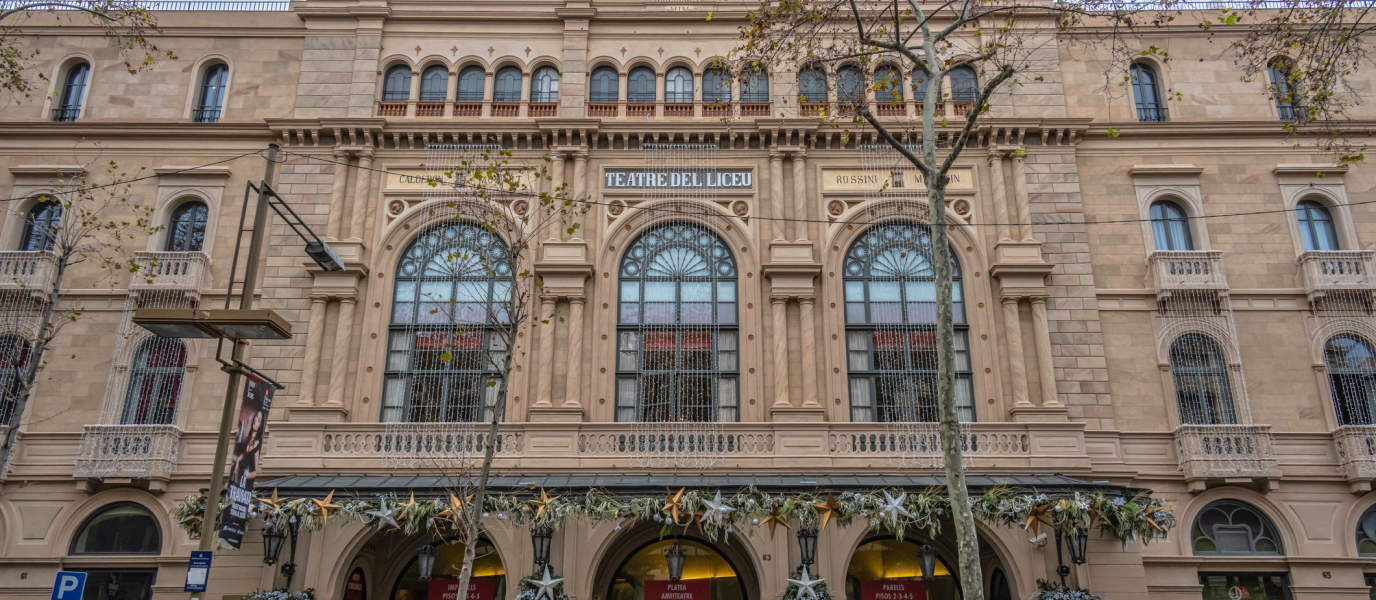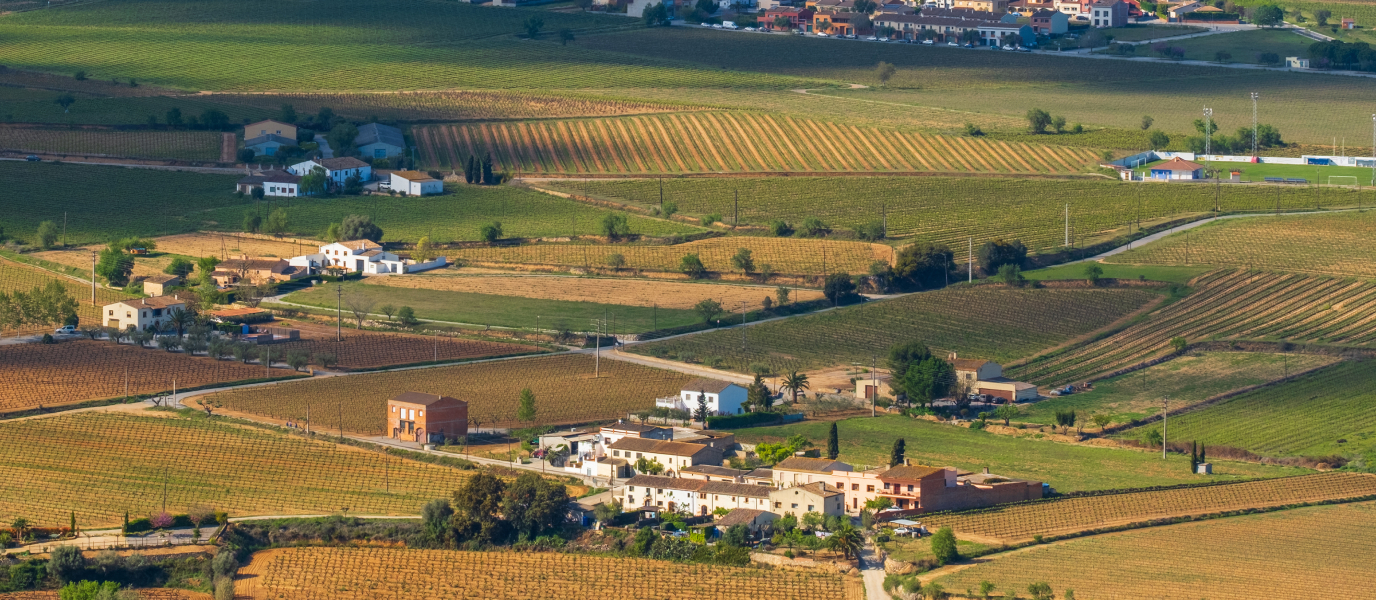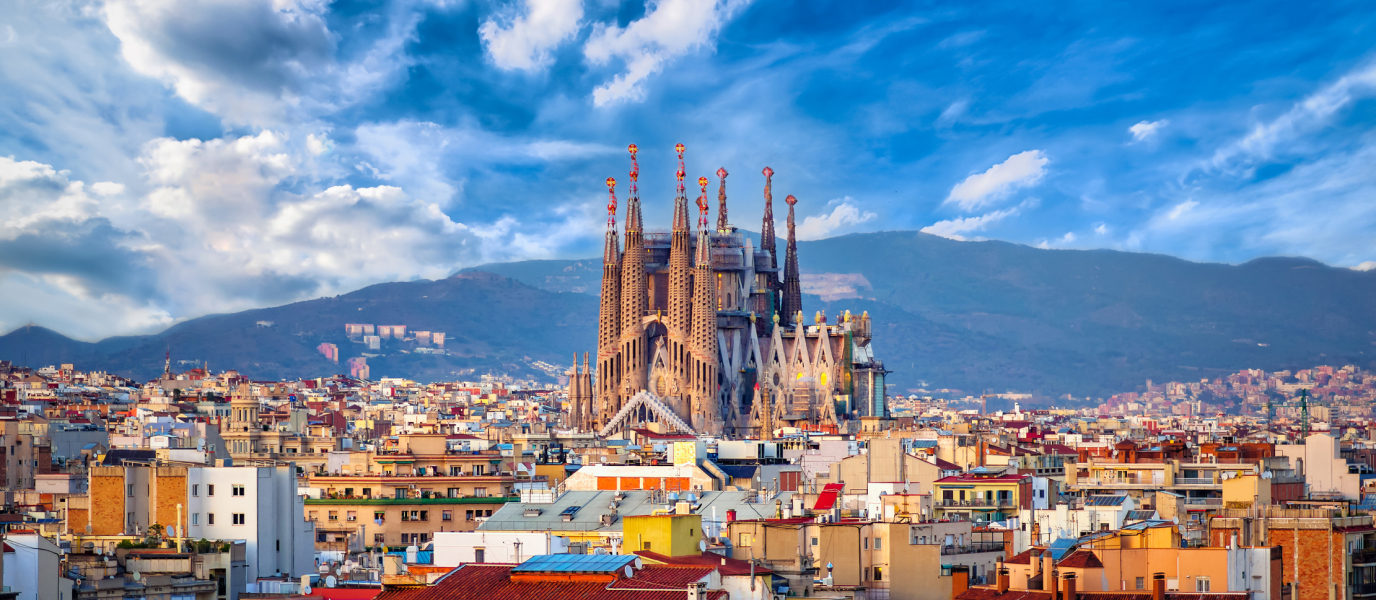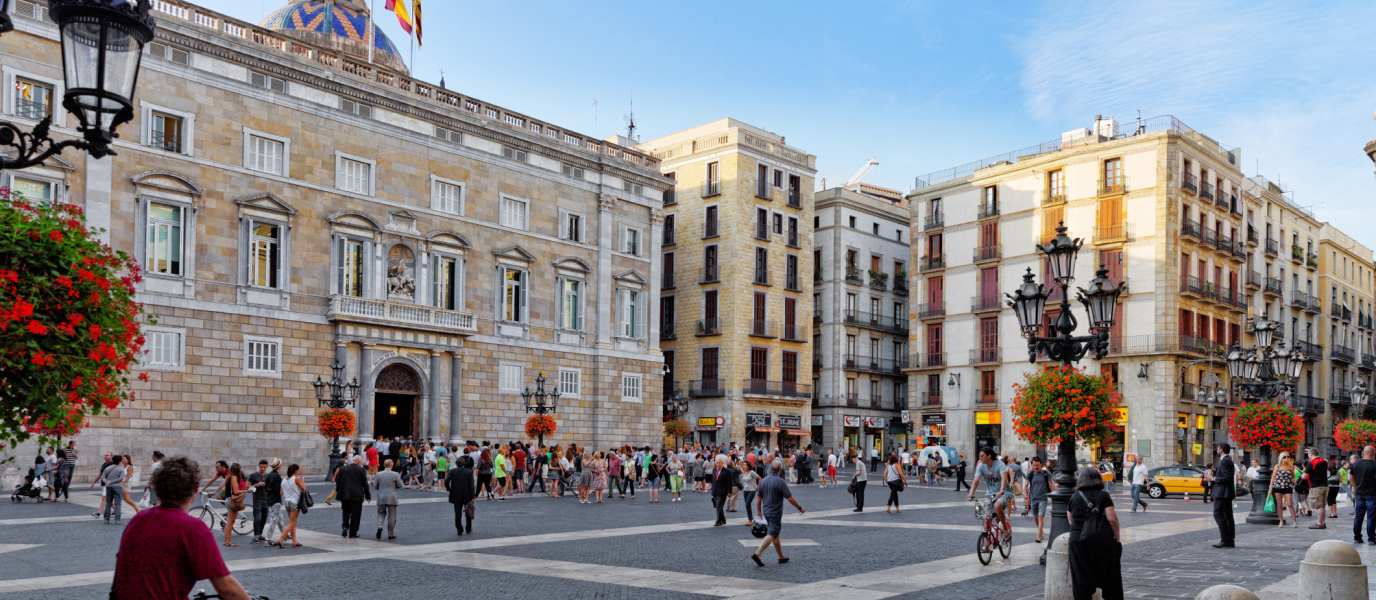Constant adaptation to new times has meant that Barcelona’s Liceu has stayed at the forefront as a theatre in Mediterranean Europe. All that is left of the original building is the façade designed by Oriol Mestres from 1874, which was built on the site of a convent of the Trinitarian Order. After the fire that destroyed the hall and the stage in 1994, Barcelona didn’t resign itself to losing its temple of opera and began to reconstruct the original building with the addition of advanced infrastructures and expanding its capacity by annexing neighbouring lots on the Rambla, Carrer de la Unió and Carrer de Sant Pau. On 7 October 1999 its opera season opened once again with a performance of Turandot by Puccini under the direction of Núria Espert.
Guided tours of the Liceu de Barcelona
To enjoy the grandeur of the building you can take several types of tours that include different parts of the Liceu. All begin in the Renaissance-style lobby, one of the few spaces that survived the fire. Especially notable is the main marble staircase, which has a sculpture of the Muse of Music at the top of it.
The tour continues through the striking horseshoe-shaped Auditorium, a replica of the original with capacity for approximately 2,300, inspired by the Teatro alla Scala in Milan. Its five tiers and box seats around the stalls as well as the dress circle make it into a unique place for enjoying operas, concerts, recitals and dance. The curtain was designed by Antoni Miró in such a way that it can be opened both vertically and from side to side. On the ceiling you will see eight painted medallions, five of which conceal the spotlights that light up during performances. The orchestra pit platform can be elevated or kept below the stage according to the needs of the performance. All of these technical innovations were installed in the post-fire restoration.
From there comes the Mirrored Salon, where the Catalan upper middle classes used to gather. The room, which survived the fire, was once called El Vergel, or The Garden. These days, after its restoration, it boasts new ceiling paintings, and at the top of the walls appear texts on art and music.
The tour concludes in the Foyer, situated beneath the stalls, where an audience briefing takes place prior to each opera performance.
If you decide to take the Prestige Tour you’ll be able to see the Cercle del Liceu, an English-style private members club that houses a great modernist art collection. Meanwhile, the Liceu Secret Tour takes in the great stage, the orchestra pit, the dressing rooms and the rehearsal rooms. The stage is the focal point of an enormous structure that is 40 metres tall and has a depth of 24 metres below stage level. Its complex facilities allow for swift scene changes and assembly, thanks to two large platforms that form the mouth of the stage and function as lifts. This journey into the heart of the Liceu and the opera world concludes in the dressmaking department and character design room. To take this tour you must book in advanced and check the calendar, as they do not take place daily.
Escape Room: the ‘Enigma Puccini’
The opera Turandot by Puccini is a highly symbolic work for the Liceu, as it was the opening performance after the fire in 1999, and the work used, in 2019, to mark the twentieth anniversary of it reopening, under the musical direction of the maestro Josep Pons with a new production by the video-creator Franc Aleu. It’s no wonder then that, in efforts to introduce new generations to opera, the Liceu now offers an Escape Room themed around the work. Based on the idea that the composer Giacomo Puccini left the ending of Turandot in the hands of the Trinitarian Order for safekeeping, participants must solve different challenges to find the manuscript hidden within the Liceu. It is also a great way to explore the different rooms of the Barcelona opera theatre suitable for those over the age of eight.
New opera audiences
If you’re not content with just a tour and you would like to experience a night of opera, the Liceu endeavours to introduce new audiences to the genre. Those under the age of 35 have their very own session, #LiceuUnder35, held twice a year and including food stands and a DJ in the Foyer.
In order to introduce kids to opera it also offers Petit Liceu Familiar, which includes programmes aimed at children of three years of age to teenagers over the age of 12 with in-house productions and classic performances.
The Liceu de Barcelona is without a doubt a symbol of Catalan society that has retained its original grandeur and been able to rise from the ashes.







































































